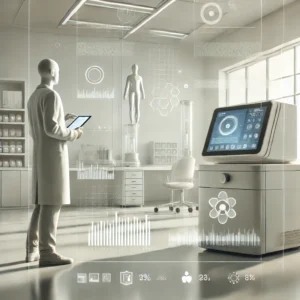Balancing Innovation and Job Security: Insights into Automation in Labs

As laboratory environments face increasing demands and staffing shortages, the role of technology and automation in transforming workflows is gaining attention. A recent poll, conducted by The Harris Poll between June 17 and June 28, 2024, sheds light on a paradox faced by lab professionals: while they recognize the necessity of embracing new technologies, many harbor concerns about job security.
Key Findings from the Poll
The data reveals a nuanced landscape of perspectives on automation and its impact on the laboratory profession:
Concerns About Job Security
Over half of respondents (52%) expressed concern that the widespread automation of tasks could threaten their jobs.
Additionally, 27% admitted reluctance to adopt new technologies due to fears of job loss.
These concerns highlight the human element of technological change. The potential for automation to shift responsibilities and reduce manual tasks creates understandable anxiety for professionals who have dedicated years to their roles.
Acknowledgment of Automation’s Necessity
Despite apprehensions, an overwhelming majority (89%) agreed that their labs must adopt new technologies to maintain and improve patient care standards.
Even more compelling, 95% believe that automating routine tasks will not only enhance patient care but also address critical challenges posed by ongoing staffing shortages.
The Dual Narrative: Opportunity Meets Fear
These results underscore a dual narrative in the industry. On one hand, lab professionals acknowledge that innovation is no longer optional—it is essential for survival in an increasingly competitive and resource-constrained environment. On the other hand, the fear of being replaced by machines creates a natural tension that organizations must address.
The Promise of Automation
Automation in laboratory settings offers numerous benefits that directly address the pressing concerns identified in the poll:
Improved Efficiency: Automating routine tasks allows lab professionals to focus on more complex and meaningful work, such as diagnostics, research, and improving workflows.
Enhanced Patient Care: With automation streamlining processes, results can be delivered faster and with greater accuracy, directly impacting patient outcomes.
Solution to Staffing Challenges: Automation serves as a practical response to staffing shortages by reducing the burden of repetitive tasks, enabling labs to do more with fewer resources.
Overcoming the Resistance
To bridge the gap between acceptance and adoption, organizations must take a proactive approach to addressing fears and fostering a sense of security among lab professionals. Here are some strategies:
Education and Training: Equip staff with knowledge and skills to work alongside new technologies, emphasizing how automation complements their roles rather than replaces them.
Transparent Communication: Openly discuss the implementation of automation, addressing concerns about job security and clarifying how roles may evolve.
Highlight Success Stories: Share examples of labs that have successfully integrated automation, demonstrating its positive impact on patient care and employee satisfaction.
A Collaborative Future
Ultimately, the future of labs hinges on collaboration—between humans and machines, and between organizations and their employees. By aligning technological advancements with the expertise of lab professionals, the industry can build a more resilient, efficient, and impactful healthcare system.
As the poll results show, the path forward is clear: innovation must be embraced, but not at the expense of the people who power our laboratories. By fostering trust and demonstrating the benefits of automation, organizations can navigate this transformation effectively, ensuring that lab professionals feel supported, valued, and integral to the journey.
This shift isn’t just about adopting technology; it’s about redefining what it means to work in a lab—where automation becomes a tool for empowerment rather than a source of fear.